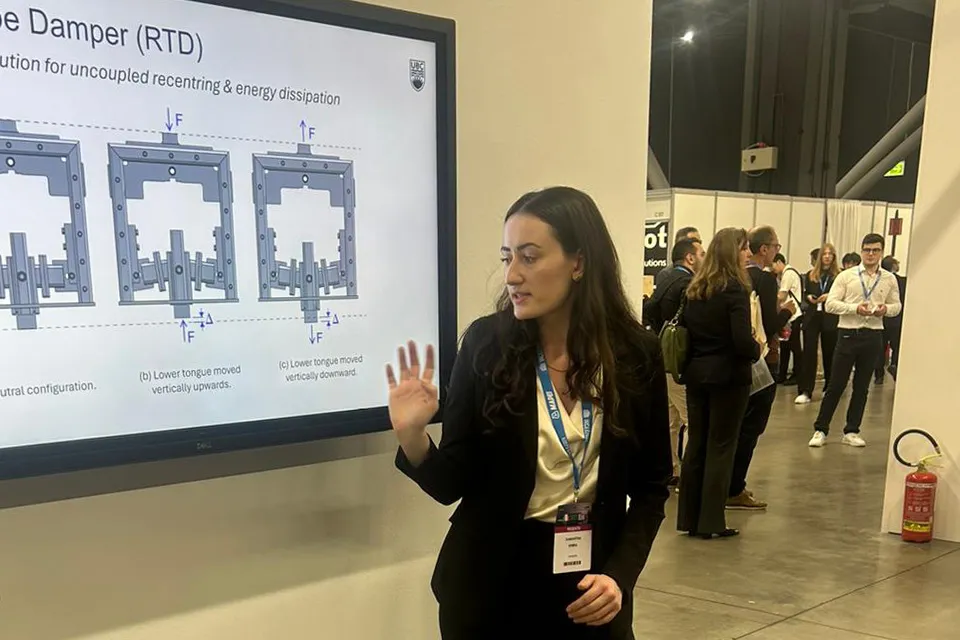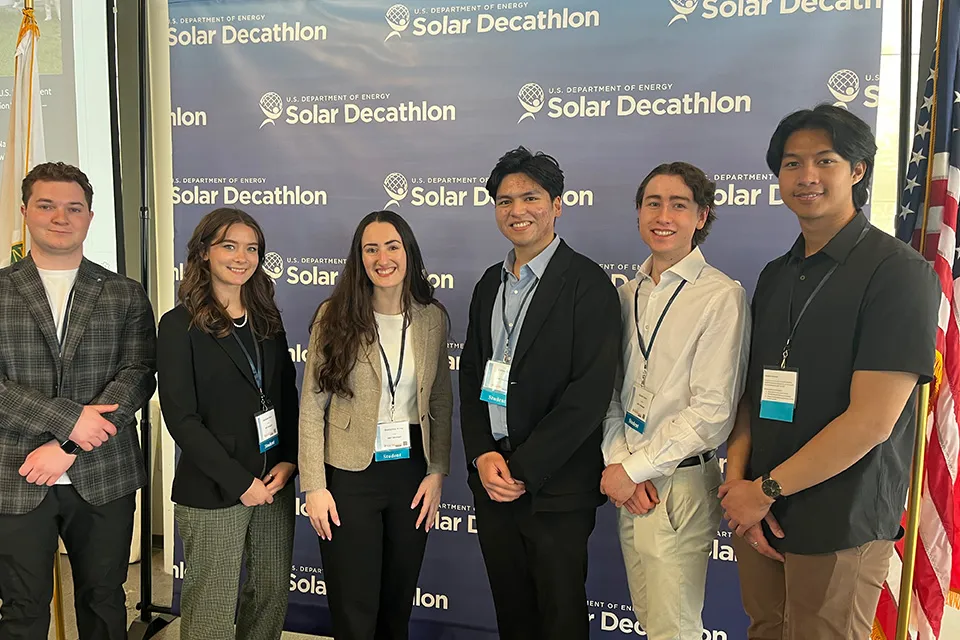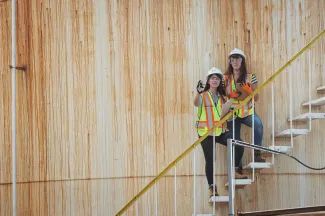Never back down from your goals just because they are challenging; true growth comes from perseverance.

- Degree: Bachelor of Applied Science
- Grad year: 2025
- Program:
- Campus: Okanagan
The first day of university I walked into the class filled with anxiety, excitement, and uncertainty as I took the first steps toward my second career as a civil engineer. I would have laughed if you had told me just a year prior that I would be studying engineering. In high school and until my early twenties, I always thought that STEM wasn't for me. I was convinced I was not good at math and science. Instead, I decided that I would become a chef.
A month before turning eighteen, I moved to Toronto, a big city full of freedom and opportunity compared to my small hometown in Northern Ontario. To convince my mother to let me move, I enrolled in culinary school at George Brown College. Although I would not have admitted it then, my mother was right; going to college provided me with opportunities I would not have had otherwise. I worked and studied full-time for two years, motivated to achieve my goals. I excelled in the fast-paced, intense environment of professional kitchens, working my way up to running a station in one of the top restaurants in Canada in under three years. Even though I had a promising career ahead of me that I loved, I felt something was missing. That is when I decided to try something new. I researched countless career paths, everything from interior design to urban planning to food science, but I kept coming back to engineering.
Looking back, it is surprising that it was not my first choice. I come from a family of technologists and engineers. Still, for the first year of my degree, I was terrified.
Despite the strong female role models in my life, I never felt like the kind of person that could succeed as an engineer. Spoiler: I was wrong.
I finished my degree in civil engineering at the top of my class. I started and led student design teams for international competitions, published four research papers and travelled to conferences globally, and participated in the Co-op program, which allowed me to work in the industry while completing my degree.
My path to becoming an engineering student was unconventional. What I hope you take away from my story is that it's okay to be unsure of what you want to do and to change your mind. What is important, is that you are working towards a goal and considering how your decisions impact your future self.

How are you applying the skills you learned through your studies at UBCO?
My time at UBCO has helped me grow academically, professionally, and personally, which I attribute to my involvement on campus. Balancing the demanding engineering curriculum with research, design team leadership, internships, volunteering, and engineering outreach is challenging, but these opportunities shaped my professional and personal growth.
For the first few years of university, I struggled with imposter syndrome. My fear of failure pushed me to develop skills that would help me land a job after graduation. Over time, my fear faded, replaced with an unwavering confidence and sense of community that drives me to this day. Overall, by getting involved on campus I learned to embrace challenges, because true growth comes from perseverance.
What advice would you give a student entering the School of Engineering?
My path to becoming an engineering student was unconventional. What I hope people take away from my story is that it's okay to be unsure of what you want to do and to change your mind. What is important is that you are working towards a goal and considering how your decisions impact your future self.
Originally, my decision to study engineering was partially motivated by not wanting to pursue graduate studies. Nonetheless, I intentionally took steps early in my degree to keep my options open, like getting involved in research and prioritizing my grades. When I later decided to pursue a PhD, this was an asset to me, allowing me to choose a project, supervisor, and university that aligned with my short and long-term goals.
The advice I would offer a student pursuing engineering, or any other degree, is to work hard to create opportunities for yourself and not let anything stop you from achieving your goals, even your self-doubt.

What is next for you?
In September, I will begin a PhD in structural engineering at the University of Canterbury in New Zealand, where I will analyze the trade-offs between embodied carbon reductions and earthquake resilience in concrete buildings. This work is motivated by recent code changes and a recently improved understanding of the region's earthquake risk.
When I have the time, I hope to continue with a research project I started while at UBCO, which focuses on developing a novel seismic damping device that dissipates energy during earthquakes, protecting buildings and the people in them. Afterwards, I plan to work in a consulting firm where I can utilize my expertise to design innovative, efficient, and safe structures worldwide.
My ultimate goal is to help improve building codes to have a broad and lasting positive impact on resilience and sustainability in the built environment.


